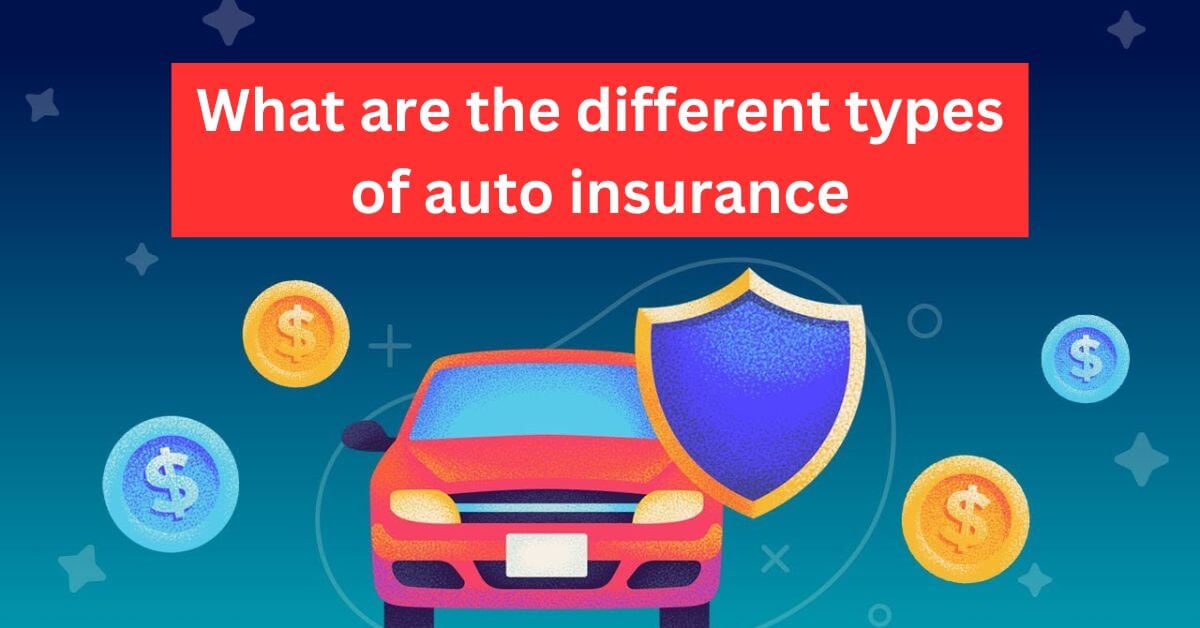What are the different types of auto insurance
Auto insurance is an essential part of car ownership. It protects you financially in case of accidents, theft, or other unexpected events. However, choosing the right coverage can be a bit tedious because there are so many options available.
This article will introduce the different types of auto insurance and help you understand what each one covers, making it easier for you to decide on the best policy for your needs.
Types of Auto Insurance
When you own a car, having auto insurance is not just a legal requirement in most places. it’s also a smart way to protect yourself financially. But with so many options available, it’s important to know the different types of auto insurance and what each one covers. lets further break down the types of auto insurance in simple terms so you can make the right choice for your needs.
Liability Insurance
Liability insurance is the most basic type of auto insurance and is required by law in most states. It covers the cost of damage or injuries that you may cause to another person or their property in an accident. However, it does not cover your own vehicle or injuries. This is a must-have for any driver, as it ensures that you can handle expenses if you’re at fault in an accident.
Read more: Best Car Insurance for Young Drivers
Collision Insurance
Collision insurance helps pay for the repair or replacement of your car if it’s damaged in an accident, regardless of who is at fault. Whether you hit another car or an object like a fence or pole, this coverage ensures that you don’t have to bear the entire financial burden.
Comprehensive Insurance
Comprehensive insurance covers damage to your car that isn’t caused by a collision. This includes things like theft, vandalism, natural disasters, or hitting an animal. If you want to protect your car from a wide range of potential issues, this is one of the most important types of auto insurance coverage to consider.
Personal Injury Protection (PIP)
Personal Injury Protection, often referred to as PIP, covers medical expenses for you and your passengers if you’re injured in an accident. Some policies also cover lost wages and other related costs. PIP is required in some states and optional in others, but it’s a valuable type of coverage to have, especially if you don’t have strong health insurance.
Uninsured/Underinsured Motorist Coverage
Not everyone on the road has adequate insurance, and some drivers may not have any at all. Uninsured and underinsured motorist coverage protects you if you’re hit by one of these drivers. It can cover medical bills, lost wages, and even damage to your vehicle, giving you peace of mind on the road.
Gap Insurance
If you’re financing or leasing a car, gap insurance is worth considering. This type of auto insurance covers the difference between what you owe on your car loan and the car’s actual cash value if it’s totaled in an accident. Without gap insurance, you could end up paying out of pocket for a car you no longer have.
Medical Payments Coverage (MedPay)
Medical payments coverage is similar to PIP but is often more limited. It helps pay for medical expenses for you and your passengers, regardless of who is at fault. While it’s not available in all states, it’s a good addition to your policy if you want extra protection for medical costs.
Roadside Assistance
While not always included in standard policies, roadside assistance is a helpful add-on. It covers services like towing, jump-starting a dead battery, changing a flat tire, or delivering fuel if you run out. This type of coverage can be a lifesaver during unexpected situations.
Rental Car Reimbursement
If your car is in the shop after an accident, rental car reimbursement will cover the cost of a rental vehicle. While this is an optional type of auto insurance coverage, it’s a convenient addition if you rely on your car for daily activities.
Choosing the Right Coverage
When deciding on the types of auto insurance to include in your policy, consider your needs, budget, and the level of risk you’re willing to take. For example, if you drive an older car, you might skip comprehensive and collision coverage. On the other hand, if you’re leasing a new vehicle, gap insurance and full coverage options might be essential.
Conclusion
Understanding the different types of auto insurance is key to making informed decisions about your coverage. Whether you’re looking for basic liability insurance or a comprehensive package, knowing your options helps you get the protection you need at a price you can afford.
Keep in mind to compare policies, and ask questions to ensure you’re fully covered. By doing so, you can drive with confidence, knowing that you’re prepared for whatever comes your way.
